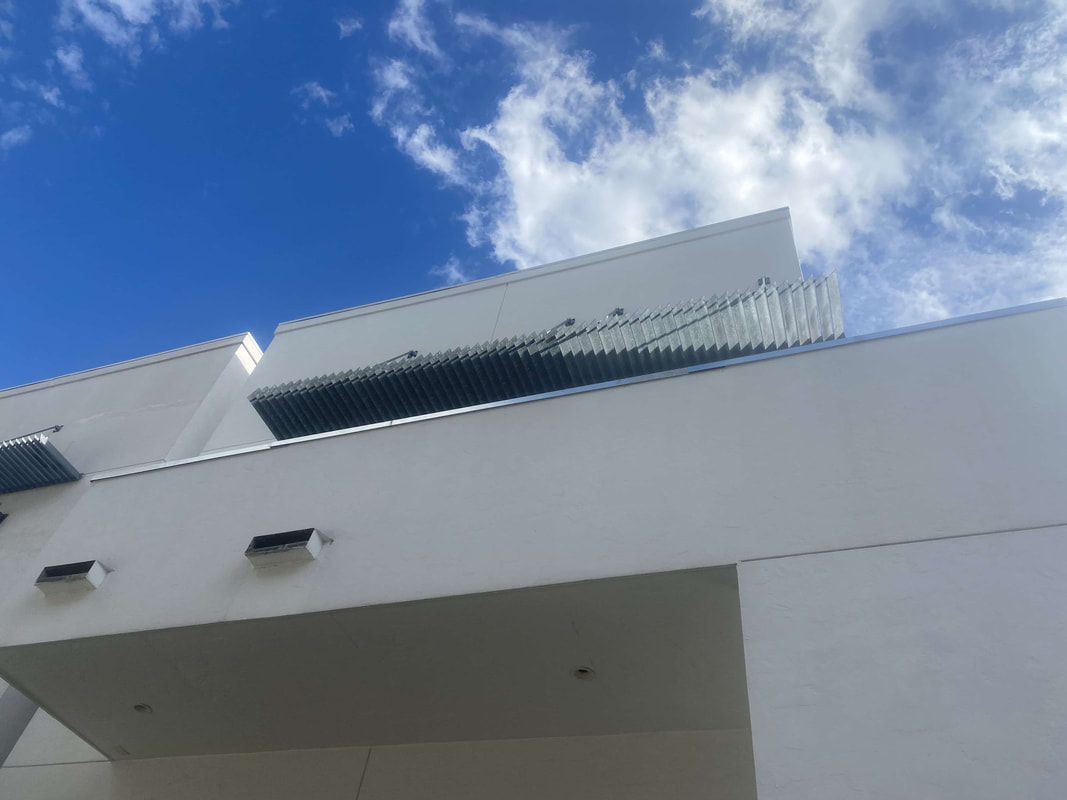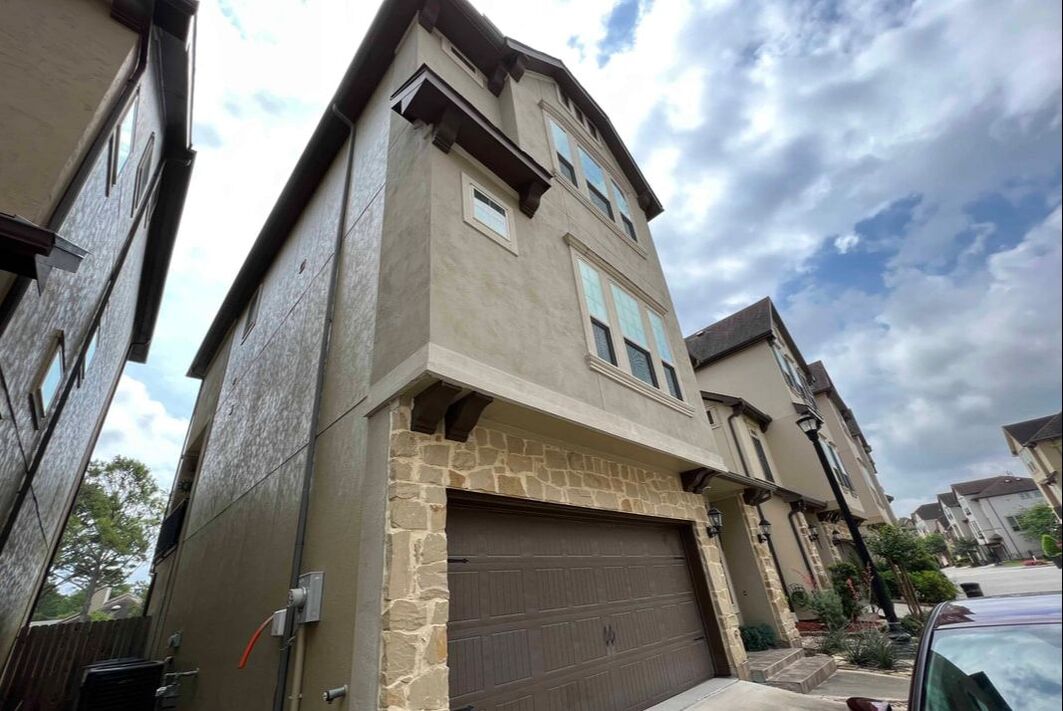Stucco Inspection in Houston, TX
|
We can provide you with a quick turnaround on your invasive stucco inspection.
With many years of experience on both sides of the stucco remediation process, you can be sure that the report will provide an accurate evaluation of the condition of your stucco home. Consider having an invasive stucco inspection carried out on your home or prospective home today! The return on investment is a multiple of the price paid for an inspection. Because the inspection reveals any deficiences, the amount invested in an inspection will help you sell your home if you are the seller and will get you concessions if you are a buyer. Don't hesitate to contact us today! |
► Fast Service ► Quick Turnaround ► Great Insights ► Experienced in both inspection and repair ► Find problem areas ► Obtain moisture readings ► All in an easy to read report |
Stucco Inspection Services
Don't see a service you need? Don't hesitate to ask!
Contact us today for a consultation on your needs. We are here to help you decide the appropriate service that will help you make a wise decision on your next home purchase.
Stucco Inspection |
What is a stucco inspection? |
You may be wondering what is involved in a stucco inspection and how it differs from your comprehensive home inspection. The short answer to this is that the stucco inspection probes within the stucco (in the form of drilling) in order to take moisture readings and look for compromised or rotted substrate underneath the stucco. This problem is caused when high moisture behind the stucco cavity is not being drained and has caused damage to the plywood sheathing which in itself is part of the structure of a house and the component that provides it with its necessary rigidity.
The probes will be done to insert a moisture reader such as a Delmhorst BD-2100 with two prongs that measure the conductance between two points. When water is present, electricity flows more freely between the probe points and through calibration, relative moisture levels can be measured.
Additionally, your inspector will be able to note the specific condition of the substrate at the exact point of drilling. When drilling into the stucco, your inspector will likely use a special masonry bit that allows the drill bit to grind through the concrete. This same masonry bit is not compatible for use on regular wood, thus upon encountering FIRM substrate, the drill bit should be met with significant resistance, even more than the stucco itself.
The inspector will note that this point is firm on his report. Upon encountering rotting substrate however, the inspector will be able to note a certain softness to the resistance and will note the substrate as SOFT.
The probes will be done to insert a moisture reader such as a Delmhorst BD-2100 with two prongs that measure the conductance between two points. When water is present, electricity flows more freely between the probe points and through calibration, relative moisture levels can be measured.
Additionally, your inspector will be able to note the specific condition of the substrate at the exact point of drilling. When drilling into the stucco, your inspector will likely use a special masonry bit that allows the drill bit to grind through the concrete. This same masonry bit is not compatible for use on regular wood, thus upon encountering FIRM substrate, the drill bit should be met with significant resistance, even more than the stucco itself.
The inspector will note that this point is firm on his report. Upon encountering rotting substrate however, the inspector will be able to note a certain softness to the resistance and will note the substrate as SOFT.
How much does an invasive stucco inspection cost?
The price of an invasive stucco inspection in Houston TX (as of the date of this writing) will vary depending on the size of the house and the number of elevations that have stucco. It will typically cost more than a conventional home inspection. This is because of the slightly more labor intensive process of drilling into the stucco.
Typical pricing would look something like this: *
* This is representative pricing based on the date we last updated our website. We reserve the right to set different pricing based on other factors or customer expectations. Neither we nor our competitors are necessarily expected to abide by these pricing estimates. You may receive pricing well below the expected market rate or above any of the figures above.
For an in depth explanation of these price and other factors, see our stucco inspection cost article.
Typical pricing would look something like this: *
- Single Elevation, Small - $650-900 *
- Two Elevation, Small/Medium Home 2000-4000 SF - $750-950 *
- Three Elevations, Medium/Large Home, 3000-5000 SF - $800-1100 *
- Four Elevations, Medium/Larger Homes, 3000-6000 SF - $900-1300 *
- Four Larger Elevations, Larger Homes, 4000-7000 SF - $1100 - 1500 *
* This is representative pricing based on the date we last updated our website. We reserve the right to set different pricing based on other factors or customer expectations. Neither we nor our competitors are necessarily expected to abide by these pricing estimates. You may receive pricing well below the expected market rate or above any of the figures above.
For an in depth explanation of these price and other factors, see our stucco inspection cost article.
Is a stucco inspection necessary?
Please note this section along with most of the site is our professional opinion.
|
We recommend a stucco inspection in most cases as this will allow you to have a better outlook on the condition of your home before purchasing or as part of ongoing home maintenance. Whereas claddings are mostly weather resistant, all claddings require regular monitoring and maintenance. The extent of maintenance on a cladding will depend on the quality of the initial materials and craftsmanship, the weather in the region where the home is located, the type of cladding, and the amount of care that has been taken to maintain it in the past.
In particular, stucco systems require more thorough maintenance for one simple reason: they are not as forgiving due to a lack of a void space or air gap between the cladding (stucco) and the structure (sheathing i.e. plywood & framing). This simple difference between stucco and other types of claddings creates a disproportionate amount of problems when other details of installations are carried out improperly. There are systems available in the market that provide these drainage planes and air spaces. These products or systems may not have been originally carried out for economic savings when the home was built. |
If you are the owner of a stucco home and are not planning to sell:
A stucco inspection whether invasive or visual is a proactive step towards maintaining an important component of your home. It has been said that with stucco spending hundreds will save thousands and that spending thousands will save tens of thousands. While this may be an anecdotal opinion, it is the opinion of many that some truth can be gleaned from it. Any maintenance regularly carried out on a stucco home also serves as an attractive selling point for prospective buyers.
If you are a seller of a stucco home:
An invasive inspection will allow you to be proactive about fixing any underlying issues within the cladding and wall cavity before the home is under contract and time constraints begin to be a factor for the sale of the home. In many scenarios as of the date of this writing, the seller is usually asked to fix any underlying water damage or compromised substrate within the stucco. Carrying out an invasive inspection well before putting the home on the market will allow you to carry out any necessary repairs. The time frames for carrying out repairs can be better understood in the following manner:
- 1-2 weeks - Request estimate from contractor, negotiate pricing and scope
- 2-4+ weeks - Typical lead time for contractor to place customer on the roster. Some contractors even more (1-3 months lead time).
- 1-2 weeks - simple repairs such as resealing and crack repairs
- 3-8 weeks - complex repairs such as core repairs or weep relief installations
- 1-2 weeks - final painting, touchups
- 1-2 weeks - Request estimate from contractor, negotiate pricing and scope
- 2-4+ weeks - Typical lead time for contractor to place customer on the roster. Some contractors even more (1-3 months lead time).
- 1-2 weeks - simple repairs such as resealing and crack repairs
- 3-8 weeks - complex repairs such as core repairs or weep relief installations
- 1-2 weeks - final painting, touchups
If you are the buyer of a stucco home:
Expect to pay for the invasive stucco inspection just like a general home inspection. The findings in the stucco inspection will provide with necessary though possibly not comprehensive knowledge of the condition of the underlying substrate behind the stucco siding.
Is the stucco inspection worth it? Do I absolutely need a stucco inspection?
|
The short answer is yes, we highly recommend it.
It is our opinion that a third-party inspection is worth the cost especially considering the size of the investment that a home purchase entails. If damages are present, an unbiased inspection provides you with valuable information regarding the (1) extent of damage (2) possible sources of damage and (3) rough idea of the scope of repairs. Even if no damages are found, the inspection report provides you with (1) a tangible "clean bill of health" on the home the home and (2) important building code updates needed since the home was built. Depending on negotiations, home sellers will only carry out needed repairs on damaged areas and carry out maintenance work items. Building code deficiencies that need to be addressed may or may not be considered as a part of the scope of modifications to be done to the house. Other times, the buyers will willingly take on the history of the home with the home purchase in an "as is" purchase deal. We recommend working with your realtor, inspector and stucco contractor to work out the intricacies of the real estate purchase. |
What is the best stucco inspection to do in Houston?
Because the southwest region of the United States is a humid region, we recommend doing an invasive inspection due to the mid to high probability of finding damage within a section or multiple sections of the home. A visual inspection of the condition of the stucco will NOT provide enough necessary information to make an informed decision on repairs, maintenance or purchase of a home. Serious damage is present by the time its effects are visible on the surface (not counting typical cracking and moderate staining of the stucco).
Who pays for a home's stucco inspection?
The buyer will typically pay for the home's stucco inspection in most cases. The owner or seller can also pay for the inspection as part of a proactive maintenance of the cladding or in anticipation of selling the home. Any interested parties in the home can pay for an inspection report but in all cases, the current owner of the home must also sign a cladding evaluation agreement allowing the stucco inspector to probe into the surface of the stucco to look for possible problems or deficiencies.






